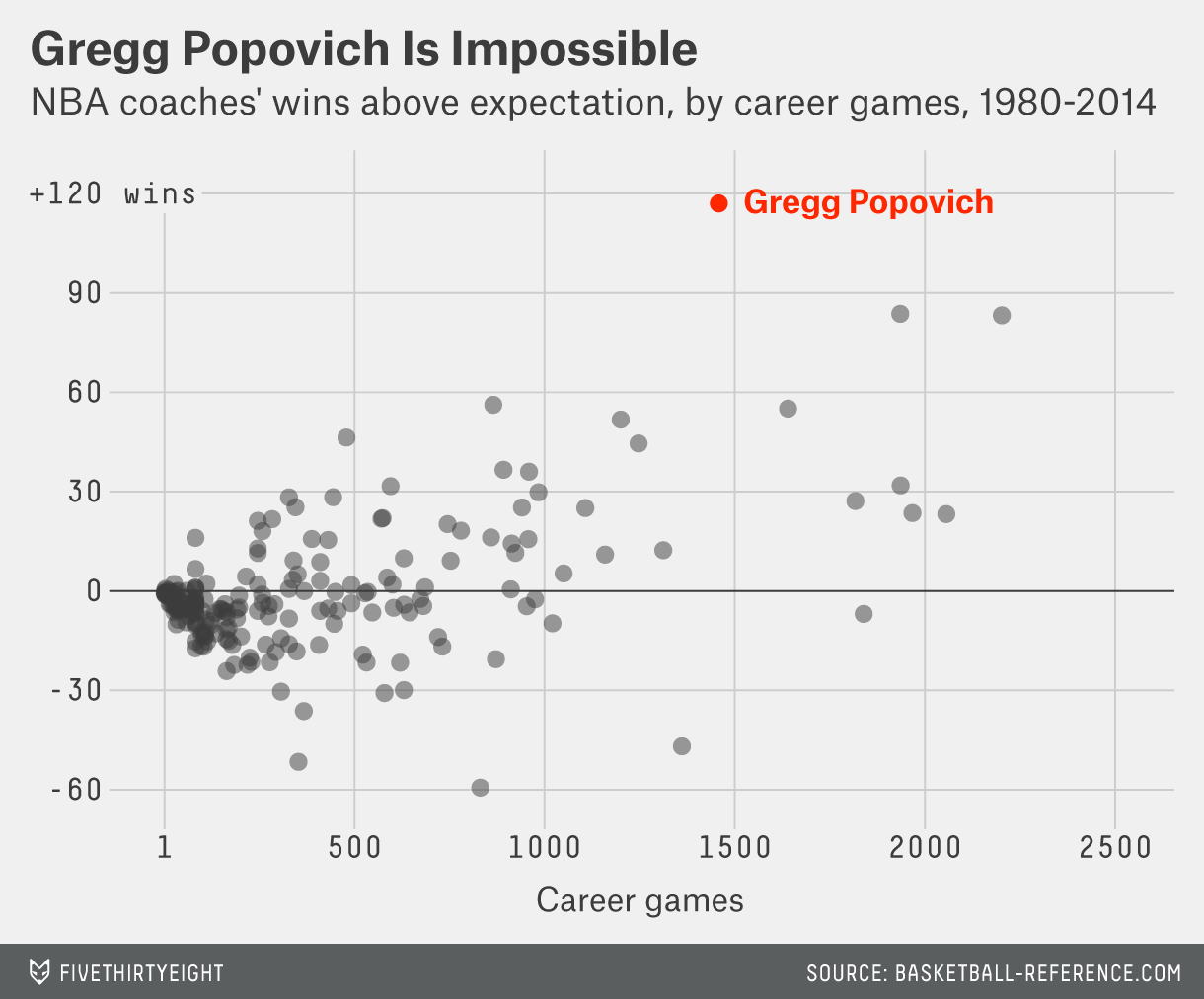Gregg Popovich Built the NBA’s Best Modern Defense. Then He Built One of Its Best Offenses.
Pop didn’t just win five titles — he reinvented his team multiple times along the way.

Friday’s news that San Antonio Spurs coach Gregg Popovich was stepping down from the role — transitioning to become the team’s president of basketball operations — was not exactly unexpected. After suffering a stroke last November, Pop had been away from the team on indefinite leave, and a reported incident at a restaurant last month made his return to the sidelines feel even less likely.
But it’s still fair to call Popovich’s job change “shocking” — just in the sense that that’s how it will feel for him to not be the Spurs’ coach anymore. After 29 seasons and more than 1,400 wins, plus five NBA championships (tied for the third-most of any coach ever), Pop was synonymous with leading this franchise with a culture of accountability, selflessness and excellence. Having that phase of things in the rearview mirror will undoubtedly feel strange going forward.
Now that it’s over, many things can (and will) be written about Popovich’s coaching career. As I alluded to here, Pop was an incredible outlier in terms of getting the most out of his players — so much so that the author Daniel Coyle spun my 2014 FiveThirtyEight research and chart about Popovich winning more games than expected into an entire chapter for his bestselling book The Culture Code:
His San Antonio start was surprisingly chaotic — turning his role as general manager into a somewhat surprising ouster of coach Bob Hill during a losing streak without David Robinson. But what was read at the time as a ruthless power grab turned out to be exactly what the Spurs needed, to provide the understatement of the century. A team that never could quite get over the hump despite stellar regular-season resumes turned into a champion under Popovich… and then he did it all over again (and again, and so forth).
But I think my favorite thing about Pop as a coach was his adaptability.
Early in their run, his Spurs were built around their defense, with Robinson and Tim Duncan serving as the “Twin Towers” inside protecting the paint. In 1997-98, Duncan’s rookie year, San Antonio rose to the No. 2 defense in the NBA; then they ranked No. 1 in 1998-99, the year of the Spurs’ first-ever NBA title. Including those seasons, San Antonio ranked either first, second or third on defense for an incredible 11 consecutive seasons, ending with a 5th-place ranking in 2008-09.
As part of that, the Popovich-era Spurs had six of the Top 16 defenses (relative to league average) in NBA postmerger history during the regular season — including the very best modern NBA defense in 2004 — plus a few of the top playoff defenses as well:
When a team relies so strongly on one dominant side of the ball to form a dynasty, we expect them to keep leaning into that trait until it doesn’t work anymore — whether because opponents figure out how to attack it, or (more commonly) because the key players who drove that historic success get older and less effective, or leave the team entirely.
What’s amazing about the Popovich Spurs, however, is that for all of their early defensive success during the late 1990s and 2000s, the early-2010s version of the club became more of an offensive-minded team. As the defense slipped approaching the 2010s, San Antonio’s ranking in overall net rating largely stayed steady because its offense improved markedly, ranking No. 2 in the league in 2010-11 and leading the league in offensive rating in 2011-12:
In fact, the 2011-12 squad (with an offense +6.3 points per 100 better than average) was the 32nd-best regular season offense in modern NBA history, and while they blew a 2-0 Western Conference final lead over the Thunder to miss out on another Finals appearance, their offense during those playoffs (+6.7 versus average) was 15th-best in modern history among teams who won at least seven games in the playoffs.1 And while the next two seasons weren’t quite as offensively dominant relative to average — they were +3.9 in 2013 and +5.5 in 2014, the latter of which ranks 30th since the merger — it is still regarded as some of the most beautiful and well-balanced offensive basketball ever played in the crucible of the NBA Finals.
Every coach owes a great deal of success to his or her players, and Popovich was no exception. Inheriting Robinson, and then landing Duncan unexpectedly in the 1997 Draft because of strategic tanking in 1996-97 and a fortunate bounce of the lottery balls, was always going to set San Antonio on a path to be one of history’s best defenses — especially in that era — as long as their coach was competent. Similarly, the Spurs’ subsequent offensive evolution was fueled by the draft steals of Tony Parker and Manu Ginóbili, and later the impressive evolution of Kawhi Leonard into an NBA superstar.
However, you still have to lead and motivate players through the ups and downs, as the seasons stack up into decades. Building a dynasty is not easy, even in a sport like the NBA. It takes a real genius like Popovich to get the most out of his players, year after year — and to have the vision to see where the game is headed, adapting to that before your rivals. And that’s also why this really does feel like the end of an era, with the architect of one of the game’s greatest sustained stretches of dominance leaving the sidelines for good.
Filed under: NBA
I picked seven wins as the cutoff because that was how many you needed to make the conference finals before every round was expanded to best-of-seven in 2003.





